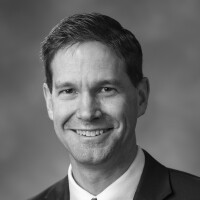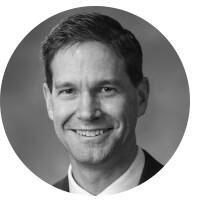Now, to set the stage for sections 6, 7, 8, and 9, we need to take a step back, away from the scripture page, and look at the setting of what’s going on—the timeline. So, a very, very quick review here. September 22nd of 1827 was the date that Joseph receives the plates for the first time out of the hill, where he could secure them. So, what happens is, we get to spring of 1828, when we have completed this portion of the translation from the seer stones that would involve what story we talked about last time: the 116 pages, and Martin, at the end of the spring, 1828, takes those pages home to Palmyra, we lose them.
So, the summer of 1828 is miserable for Joseph and Emma. They’ve lost their first-born son named Alvin, we’ve lost the manuscript, he’s lost the plates, the Urim and Thummim, he feels at one point like he has lost his soul, and it’s pretty miserable. That’s when the Angel Moroni came to him in the woods near their home in Harmony, showed him the Urim and Thummim with the beginnings of section 3 on the stones that he then recorded down, like we talked about last week, the first section recorded.
In the winter of 1828 to 1829, Joseph’s parents, Joseph Senior and Lucy, they came down to visit Joseph and in February of 1829, that’s where Joseph receives section 4 that we talked about last time. Now, watch. Martin Harris arrives in March of 1829, that’s where we got section 5. So, section 3 was back here; we’re lining this out as we set the stage for section 6, where we jump in today.
So, before these events occurred in the early part of 1829, here on September 22nd, again, of 1828, the Angel Moroni had promised Joseph that if he humbled himself and repented, then the plates and the Urim and Thummim would be returned to him, which they were. So here he has the plates back, but he doesn’t have a scribe, and he’s struggling to just keep his financial head above water, so to speak, to survive in this world.
Well, God provided a means for the translation process to continue and move forward, and here’s how he did it. In the fall of 1828, a man by the name of Oliver Cowdery came to Palmyra, New York to be the teacher for the city school there. And as was customary in that time, the teacher would then board at the homes of the various families that sent their children to the school, and they were also paying the salary for this teacher.
Oliver heard stories in Palmyra about a golden Bible and seer stones, about a translation and angels. And while most of the people in Palmyra were mocking and making fun of these stories, it caught Oliver’s attention because he, like Joseph, had become pretty discouraged with the religious landscape of the day. And so he requested after hearing enough of these stories, he requested to go and stay with the Smith family, which he did. And he asked questions, and they could tell that he was more sincere, and so they opened up a little bit more with him than they had with others, because they had become quite quiet on a lot of fronts with a lot of people, because every time they said anything, they would bring on persecution.
Oliver loved what he was hearing, for the most part, and he wanted to somehow be a part of it. And as soon as that 1828 to 1829 school year ended, which would have been much earlier in the spring than what we’re used to in our modern culture, sometime in early April or late March, somewhere in there, depending on the year, he decided, I’m going to go to Harmony. So, he and Samuel, Joseph’s brother Samuel Smith, walked the nearly hundred-mile trek from Palmyra down to Harmony on muddy streets. It was a very wet journey for them, on foot, and very cold, by the way. Incidentally, when he arrived, he had a frost-bitten toe. And he’s excited to finally meet Joseph, the Prophet who he had heard so much about, and now he met him, and it’s one of those amazing friendships that was forged almost immediately.
Just for context, Joseph is quite tall. He’s over six feet tall. Oliver Cowdery is about five foot four. Oliver is one year younger than him. And Oliver is extremely gifted with writing, and he’s much more learned, as far as the world is concerned, than Joseph.
So, they began this process of now translating the rest of the Book of Mormon. Keep in mind, we lost 116 pages. Jack Welch has done a lot of work and a lot of study on this process: The translation process: Imagine Oliver Cowdery hearing verses from the Book of Mormon for the first time—the translation process through seer stones, and how long it took, and what days they’re likely to be translating. And it’s fascinating when you look at the situation. Picture Oliver Cowdery coming, and the first item of business that he helps Joseph with is to write a contract for his father-in-law, Isaac Hale, Emma’s parent, to say, I will repay you for this land, and this home, and the spring, and the barn that’s on Isaac Hale’s property that Joseph and Emma are now living in. So that was the first thing Oliver helped him do, and then they began the translation process.
Can you imagine being Oliver Cowdery, having heard about this, when the first things that you hear fall from the lips of the prophet as you’re scribing for him are probably the first few chapters that we have in our book of Mosiah? Picture your introduction to the translation of the Book of Mormon being King Benjamin’s speech, and the precursors to King Benjamin’s speech. Now picture being Oliver Cowdery in his situation, where he’s a school teacher. He doesn’t have a lot of money.
And he is a little concerned about his physical well-being, and now he’s living in the home with a poor farmer who’s in debt with a wife, and they’re struggling with money. And picture some of these words in their historical context, what it might have meant for those two men performing this work, and Emma, who’s listening in much of the time in the room on what’s going on.
Listen to these words from Mosiah 2, starting verse 23: “And now, in the first place, he hath created you, and granted unto you your lives, for which ye are indebted unto him. And secondly, he doth require that ye should do as he hath commanded you; for which if ye do, he doth immediately bless you; and therefore he hath paid you. And ye are still indebted unto him, and are, and will be, forever and ever; therefore, of what have ye to boast?”
Beautiful words that apply to their situation. But then, at a much deeper level, can you imagine what it might have felt like for Oliver Cowdery to be dipping that quill in ink, and listening to these words as he then puts them to paper in our dispensation, words like these: “For behold, the time cometh, and is not far distant, that with power, the Lord omnipotent who reigneth, who was and is from eternity to all eternity, shall come down from heaven among the children of men, and shall dwell in a tabernacle of clay,” and then go on and on with this description of Jesus.
Can you imagine how sweet it must have been to Oliver to hear these words, and to record them, as he realizes, very early, on what he is now a part of, this unfolding of the Restoration of the Gospel and through this translation process through seer stones of the Book of Mormon? Notice that the section heading to D&C 6: Revelation to Joseph and Oliver provides assurance, counsel, and direction to “seek to establish the cause of Zion.”

By Dr. Tyler Griffin, Source Expert
Dr. Tyler Griffin embarked on his professional journey by teaching seminary courses for a period of six years in Brigham City, Utah. Following that, he dedicated the subsequent seven years to instructing at the Logan LDS Institute, located adjacent to Utah State University. Alongside his participation in the Seminary Preservice program, he spearheaded and supervised the implementation of the online seminary program. Dr. Griffin has been an educator at BYU for well over a decade and holds a co-founding position within the BYU Virtual Scriptures Group. His undergraduate degree is in Electrical Engineering, while both his master’s and doctorate degrees center around Instructional Technology. Dr. Griffin is the exclusive author of “When Heaven Appears Distant” co-author of “Come Unto Me: Illuminating the Savior’s Life, Mission, Parables, and Miracles” and co-editor of “Millions Shall Rediscover Brother Joseph.”

Fact Checked by Mr. Kevin Prince, Source Expert
Kevin Prince is a religious scholar and host of the Gospel Learning Youtube channel. His channel has garnered over 41,000 subscribers and accumulated over 4.5 million views. Mr. Prince also created the Gospel Learning App, a reliable platform where individuals seeking truth can access trustworthy answers to religious questions from top educators worldwide.
About Mormonism Explained
Mormonism Explained is a resource that was designed to provide objective and factual information about Mormonism, its history, doctrines, and policies. Our team of researchers consults experts and primary sources to present factual information on a variety of topics relevant to the Mormon Church.
Tags

